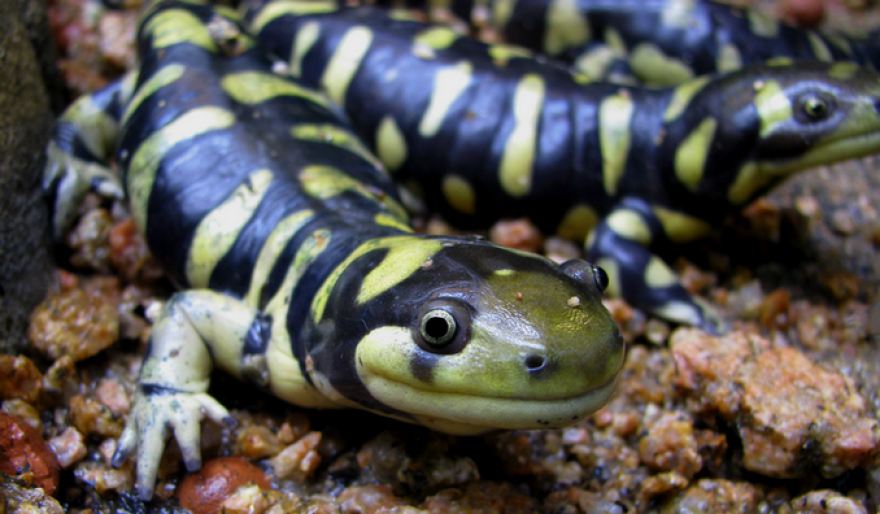It's a good thing most inhabitants of the Colorado Plateau don't turn to the same strategy in dealing with a tough climate as tiger salamanders do. When they're so inclined, these big amphibians sometimes react to food shortages by eating each other.
Tiger salamanders are pretty adaptable. In wetter years, they hang out in ponds and pools, where they spawn in spring. When they first hatch, the larvae look a lot like fat, olive-green tadpoles. But as they grow, they develop three external gills on each side of their heads.
Some salamanders stay in the water all their lives. But in dry years some salamanders leave the water and grow stubby legs, metamorphosing into what looks like a wet, fat, slimy lizard. Mottled yellow and black, they sometimes have barred tiger-like stripes, which is how they get their name.
Although typically around 5" long, terrestrial salamanders occasionally grow to almost 15" long. That's big enough to eat not just insects, but other amphibians, lizards, mice...and each other.
This land-based lifestyle helps tiger salamanders reproduce during drought. But unless it's rainy, they have to stay in spots where it's humid, such as under a rock or log.
Salamanders are often used as fishing bait. Just one word of warning: they're susceptible to a viral disease that can spread to other amphibians - so in order to avoid infecting new areas, it's critical to not move them from place to place.


